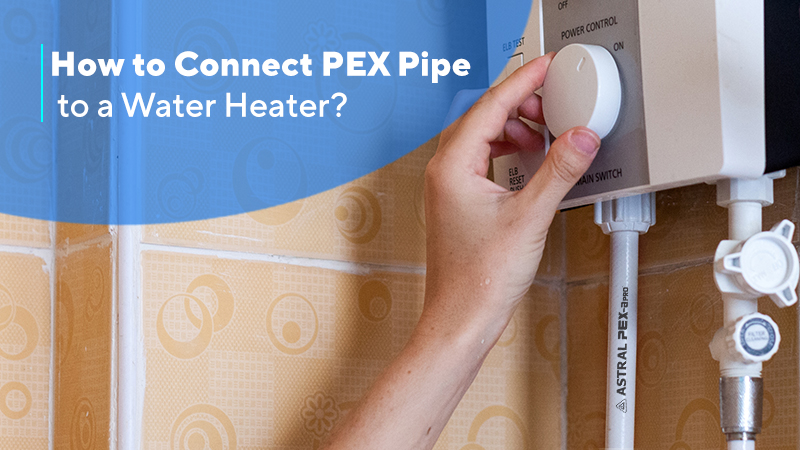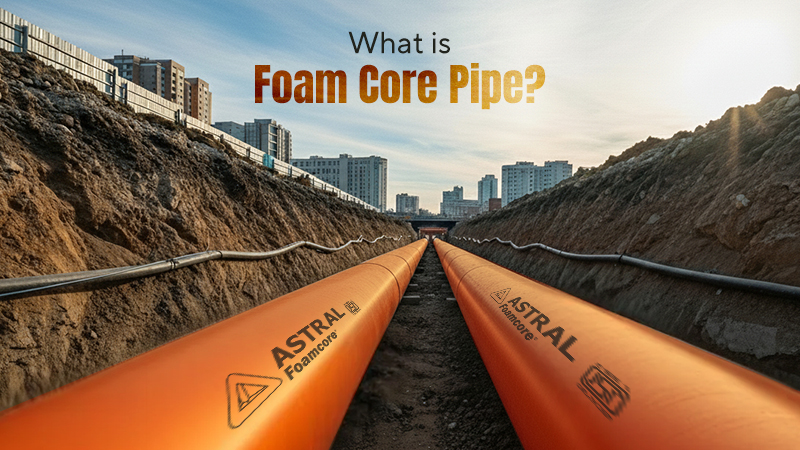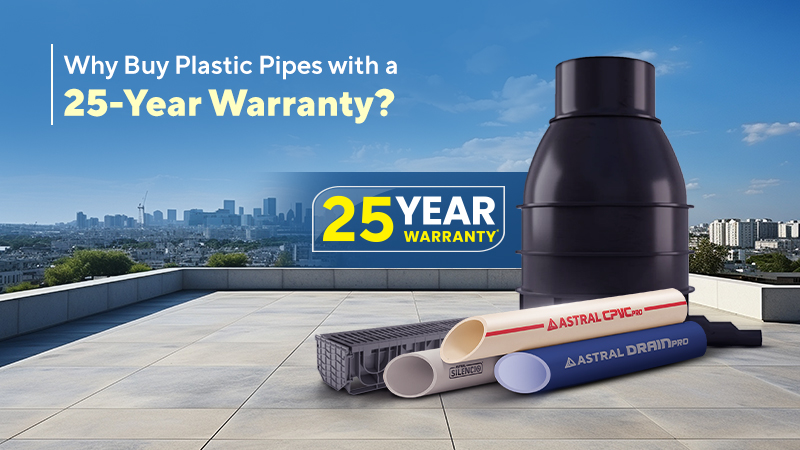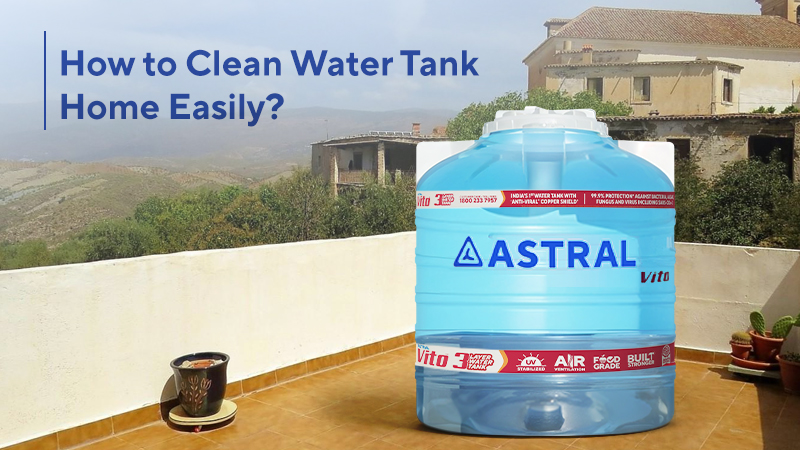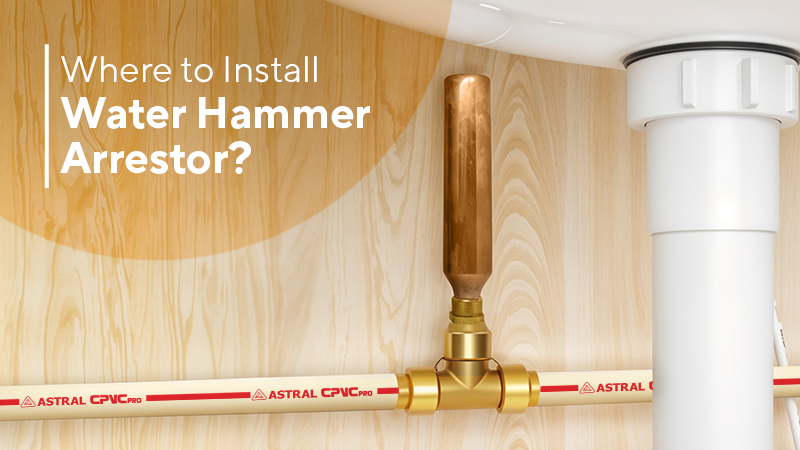
30 Jun 2025
Where to Install a Water Hammer Arrestor?
Plumbing systems are designed to transport water efficiently and safely throughout a building, but sudden pressure surges can disrupt this flow and cause serious damage. When water flow is stopped abruptly, such as when a tap closes quickly or an appliance shuts off, shockwaves can travel through the pipes, creating banging noises and placing strain on the entire system. This is known as a water hammer arrestor, which can loosen fittings, crack plumbing pipes and shorten the lifespan of household appliances.
To safeguard your plumbing network from these’ water hammers’ and avoid costly repairs, installing a water hammer arrestor is essential. In this blog, we answer three key questions: What are water hammer arrestors? How do its work? And where exactly in the plumbing system should they be installed?
What is a Water Hammer Arrestor?
A water hammer arrestor is a device used in plumbing systems to absorb the shock caused by sudden changes in water pressure. When a valve shuts quickly, water moving at high speed stops, creating a hydraulic shock wave that hits the pipe as a ‘hammer’ would, and can be heard as a loud echoing sound. These shock waves can damage plumbing pipes, joints and connected fixtures. The arrestor contains a chamber filled with air or a spring-loaded piston that cushions the pressure surge and prevents it from passing through the system. A pipe hammer arrestor helps protect appliances, reduce noise and prolong the life of your plumbing network.
How Do Water Hammer Arrestors Work and Where to Install Them?
Water hammer arrestors provide a cushion that absorbs the shock wave caused when water flow is abruptly halted. This prevents the pressure spike from reaching the end of the pipeline or bouncing back into the system. The arrestor usually contains an air-filled or spring-loaded chamber that compresses under pressure, protecting appliances and plumbing pipes from vibration and impact. Placement is important to the performance of a pipe hammer arrestor. It should be installed as close as possible to the source of the noise or vibration. Common fixtures include washing machines, dishwashers and toilets. These appliances typically have fast-acting valves that trigger water hammers.
Place the water hammer within 1.5 to 2 metres of the problematic fixture. In some cases, it may also be beneficial to install one at the water heater or the main supply line if the entire plumbing system is affected.
Signs You Need a Water Hammer Arrestor
Top Signs You Need a Water Hammer Arrestor for Your Water System.
1. Loud banging or knocking noises when shutting taps or appliances
2. Shaking or vibrating plumbing pipes
3. Frequent leaks at pipe joints or valve connections
4. Reduced efficiency or lifespan of dishwashers and washing machines
5. Visible damage to fixtures or pipe supports
These are strong indicators that your plumbing system needs a new pipe hammer arrestor or more.
How to Install a Water Hammer Arrestor?
Steps to follow for proper water hammer arrestor installation.
Step 1: Shut off the water supply before installing a water hammer arrestor.
Step 2: Identify the source of the hammer, usually appliances with quick shut-off valves.
Step 3: For threaded models of water hammer arrestor, disconnect the hose, attach the arrestor to the valve or pipe outlet, then reconnect the hose.
Step 4: Certain types of pipe hammer arrestors, such as push-fit and compression models, are designed to be inserted into a cut section of pipe using appropriate fittings.
Step 5: Ensure the hammer arrestor is installed upright and as close as possible to the problem fixture.
Step 6: For larger systems or Plumbing Pipes that require soldering, it is advisable to consult a professional plumber for installation.
Step 7: Choosing the correct size and pressure rating is essential for your pipe hammer arrestor to function effectively.
If you are unsure what is water hammer arrestor is or how to select one, always seek expert advice.
Choose the Right Water Hammer Arrestor
Water hammer is more than just a noise issue. It can seriously damage plumbing pipes and home appliances. Installing a water hammer arrestor near fixtures like toilets and washing machines ensures your system stays safe, quiet and efficient. Correct placement of a pipe hammer arrestor is key to reducing pressure surges and extending the life of your plumbing network.
Astral Water Hammer Arrestors are specially designed to handle such issues. With a precharged, permanently sealed air chamber, arrestors effectively absorb pressure spikes. This protects your plumbing system from damage while ensuring long-term reliability.
Choosing the right water arrestor offers a simple yet effective solution to safeguard your plumbing system and appliances.
Read our blogs on How to Drain Rainwater From a Roof?


